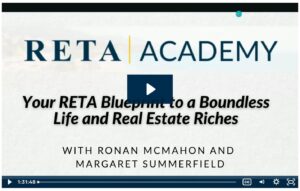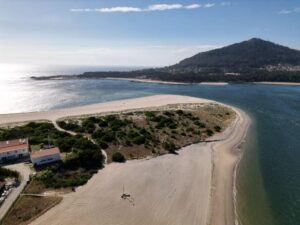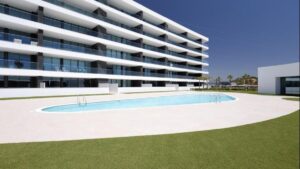Friday, November 05, 2021
 Dear Your Overseas Dream Home Reader,
Dear Your Overseas Dream Home Reader,
People the world over have survived inflation…
In Argentina they know a thing or two about it. They buy real estate.
In Brazil you will hear the 1990s described as “the inflation.” Brazilians protected themselves by buying real estate.
But what happens when you can’t buy real estate?
In Cuba sadly, Fidel Castro and his cronies hit Cubans with a double whammy. They devalued their currency to death. And for decades prohibited Cubans from protecting themselves through free market purchase and rental of real estate.
Before joining my research team, Eoin Bassett spent time in Cuba.
He was there while Castro’s government operated two currencies and banned the use of U.S. dollars.
Below he shares his experiences…
Wishing you good real estate investing,
|
|
Ronan McMahon, Real Estate Trend Alert
Rum with Communists in Cuba
By Eoin Bassett
“My name is Hugo Pérez Rodrígez and I am a life-long member of the Cuban Communist party!”
It was December 2004 and I was standing in the stairwell of an apartment block in Havana.
The old man had raised his voice, but he wasn’t angry. Just fired up and ready for a row with his guest from the West.
“Nice to meet you. Good for you about the communism,” I said in my weak Spanish.
He held the door open in front of me wearing a dressing gown flowing open to reveal stripy boxer shorts and a pigeon chest speckled with gray hair.
On the ancient television set behind him Fidel was making a speech.
Fidel Castro made a lot of speeches…long speeches. In our era of 280-character tweets it’s hard to imagine anyone speaking for seven-and-a-half hours, let alone anyone listening. Yet that’s how long Castro spoke for at one Communist Party Congress in Havana.
The guy was always on television. I’d only been in Cuba a few weeks and I was already tired of his voice and wagging finger.
Not Hugo though. He watched all the speeches he told me. A fervent believer, he found me disappointing. I wouldn’t argue. I was careful what I said. This was thanks to an uncomfortable but thankfully short interrogation by the Cuban Ministry of the Interior earlier that week.
Besides, my companion and I were only visiting the old man for his rum.
“Do you have rum” my friend asked. He was Hugo’s nephew. He wanted to be a dancer but the government said he had to work in a cigar factory for $15 a month. So, he did, and when he wasn’t working he drank rum with me and talked about women.
“Let’s support the revolution by drinking rum uncle!”
My friend was interested in a better class of Cuban party…
I drank a lot of rum in Cuba. I spent most of my time wandering around Havana waiting for money to arrive. My plan to explore the island had fallen foul of petty theft. With no bank cards and very little cash I was adrift. Aimless. I attempted to learn dominoes with some guys on the street where I stayed. I went to the Malecon to people watch. I drank rum, read books and played Irish music for bored neighbors.
The trade embargo meant I had to have money sent in round-about ways from Ireland to the British consulate. It took weeks.
Those weeks were an incredible education.
My Cuban trip was one of my first forays into the world. I had quit a bad job and hit the road in Mexico from where I traveled to Havana.
Investor Jim Rogers writes in his book Street Smarts that whenever he gets to a new country he looks for the black market, the shadow economy.
Rogers reckons that the black market tells you more about what’s really going on in a country than anything else.
He might be right.
I remember being offered onions by a furtive black marketer in Havana. Food was currency…the peso, not so much. If you wanted to get by in Cuba, to eat…you had to go to the black market.
There were two currencies in circulation in Cuba. Cuban pesos and convertible pesos.
The convertible peso looked like Monopoly money. It was designed for use in the emerging tourism trade. It’s been killed off now and it’s well explained here.
Anyhow, when I arrived in Cuba U.S. dollars were no longer allowed for use as legal tender. A 10% tax was levied to convert USD to convertible pesos. Tourists were expected to use convertible pesos for almost everything. Locals who worked in tourism did well, while anyone working for the state was paid in the fairly worthless Cuban peso.
I have another memory of buying the only packet of Camel cigarettes in a store. It was kept behind glass like an exotic museum piece. Half the neighborhood came out to watch (and to bum cigarettes.)
I spent most of my time in Vedado—the Havana neighborhood built by the sugar barons and American pleasure seekers.
Those fine art-deco mansions of the rich were chopped up into smaller family homes long before I got there. You’d see a doorway punched in a wall, or a window turned into an entrance. I spent nights on the seafront when the waves shattered the reflected moon on the large solid blocks of the Malecon, Havana’s famous seawall.
And when the rum was gone we would walk back up La Rampa back into the dark streets of Vedado under the drooping jacaranda trees with roots that burst through the pavements and cracked the curbs.
These nights gave way again to bright dappled days in the sun when we would wake late to the thud of the fishmonger’s cleaver below where the women of the neighborhood queued on the dusty verge.
I liked the nights best for their coolness and the magic quality of their darkness when I could see the torchlight of dogs eyes in the streets and in the tree root hollows where they lay.
The dogs slept all day prone like dead things in the dust, but at night they came alive and moved in packs along the rotting roads and among the crumbling houses. And I moved too and the mansions and the townhouses with their improvised doors and fire escape entries were like the dogs; organic things that slept during the day in the shade of the dripping trees and crawled with living things, families sometimes five or more to a house, who came and went through the holes knocked in walls and up and down stainless steel staircases bolted onto the sides of houses.
The Cubans were educated, frustrated, tired.
The old men, the ones I knew, were sad, and said they remembered bodies in the streets and dark chaotic days before Castro, and they spoke about how good it was that there was none of that anymore.
The young folk all wanted to leave—sick and tired of revolution.
There was trouble the day the old woman from the Committee for the Defense of the Revolution saw me with a chicken.
She sat in a rocking chair on her stoop smoking cigars. Her job was to observe and report. And when she saw me with a chicken and a bag of groceries she knew I was staying close by. She knew someone was running an unauthorized accomodation for tourists. Private enterprise was not tolerated then.
The only physical reminder I have of my six weeks spent in Havana are two grubby coins. I keep them on a shelf of travel books and trinkets in my Irish farmhouse. They sit beside a dried leaf from an olive tree growing out of the walls of Troy…some strange green beads from a shaman in Mexico…a Fijian seven dollar note…all stories of their own.
I suppose I keep the two coins in the hope that some day I might show my children that history is sometimes just the difference in weight between two grubby coins.
Both are 20 centavos, the Cuban peso kind, but one is as much lighter than the other.
Minted in 1968 the first coin has the face of the great Cuban patriot Jose Marti in profile on it. On its rim are grooves, and it has the satisfying weight.
The second coin is from 1969. Jose Marti is gone and it is as light as a feather. It feels like the plastic chip one gets in a board game. On it is a revolutionary star.
In 1960 the Cuban peso had been pegged to the Soviet rouble away from the dollar. The peso’s decline in value continued with the U.S. embargo and the suspension of the sugar quota.
The 1968 coin was minted in Leningrad, USSR. It weighs 6.4 grams and is made of Copper-75% Nickel-25%.
The 1969 coin was minted in the small central European country of Slovakia, in the oldest working mint in the world. It weights two grams and is made of aluminum.
And by the time someone handed them to me they were worth almost nothing. Today, the only value they have is probably the market price for the metal they’re made from.
But for me, they serve as physical reminders. I can show my kids and tell them about the time their old man lived on the streets of Havana and drank rum with the bums.
And I can talk to them about the fragility of currency.
Money always dies. From Rome to the Weimar Germany when government officials got paid in potatoes…from Havana to Washington…
Politicians inflate and manipulate (aka devalue) currency to pay off promises they can never keep.
A much harder thing to do with the Irish farmhouse those coins are kept in…
Ronan says: Inflation is raging in Cuba. In January 2021 the government got rid of the convertible peso. The Cuban peso now trades on official government exchanges at 24 to the U.S. dollar. But the black-market rate is nearly triple that, reflecting the real worth of the peso to Cubans. Some economists are predicting 500% or more inflation by the end of the year.
Like I said up top, in Brazil you will hear the 1990s described as “the inflation.” Brazilians protected themselves by buying real estate. And even pre-construction real estate found a way to exist by applying an inflation adjustment to your outstanding balance on every month. People paid interest plus inflation on delivery. Strong developers were inundated with cash. Folks paid 100% upfront for condos due for delivery in two years’ time as way to prosper during inflationary periods. Money in bricks and mortar appreciated in real terms. Bank deposits cratered.
You want to be in real estate in inflationary periods because…
- Demand for shelter is inelastic. You need somewhere to live. Rents can grow in nominal and real terms in inflation.
- Components of real estate (Labor, steel, etc) are susceptible to inflation and prices also tend to be extremely volatile in inflationary periods. This limits the creation of new housing supply in inflationary periods…limiting your competition.
Inflation hurts the middle and salaried class’s ability to save for a home increasing the rental market.
In November 2011 the Cuban authorities finally passed a law permitting the sale and purchase of real estate by Cubans. But the country had more than 50 years where properties were not sold (at least not officially). Nobody knows what shape the public registry is in or if there is such a thing as clear title.
That doesn’t scare some people. A few years ago my senior research Margaret Summerfield spent time in Havana and met a Spaniard down on his luck. He had a Cuban girlfriend. They bought a stately but run-down historic home in Havana. Of course, this was a cash deal, done in his girlfriend’s name. Shortly after, she dumped him—but kept the house.
Another thing five decades without a real estate market does is skew pricing. With no accurate sold prices, folks have no idea what their home is worth. Often, they’ll just make a price up. Or base it on a completely different market—like, say, Miami. Is a home in Havana worth the same as one in Miami? Who knows. There are no comps. There’s no transparency, no track record of sales, no open market.
Then, there’s the elephant in the room…
Thousands of foreign-owned properties in were seized after the 1959 revolution. Many owners have yet to receive any compensation. The 6,000 certified claims in the U.S. alone amount to almost $8 billion. That doesn’t cover uncertified claims.
I’m keeping an eye on Cuba and it’s new and unique real estate scene, but don’t be expecting any recommendations.
The lesson is, as I say, you want to put your money in real estate in inflationary periods…if you can.
Like what you’re reading?
Send your thoughts to feedback@realestatetrendalert.com. I’ll post and respond to as many of your emails as I can right here in the e-letter. Find out more about our feedback policy here.
|
Connect with us on Instagram
|











